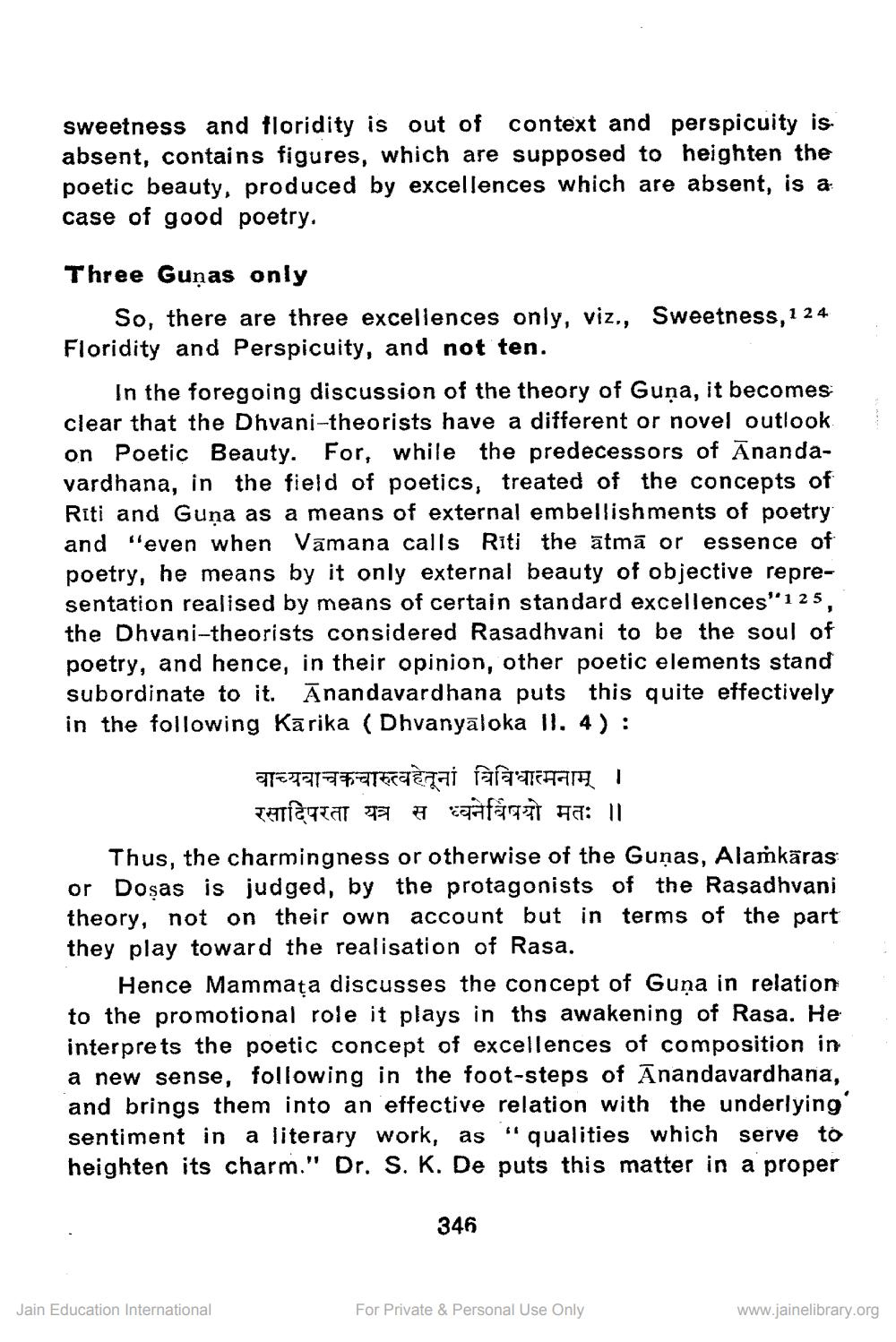________________
sweetness and floridity is out of context and perspicuity is absent, contains figures, which are supposed to heighten the poetic beauty, produced by excellences which are absent, is a case of good poetry.
Three Guṇas only
So, there are three excellences only, viz., Sweetness, 124 Floridity and Perspicuity, and not ten.
In the foregoing discussion of the theory of Guna, it becomes clear that the Dhvani-theorists have a different or novel outlook. on Poetic Beauty. For, while the predecessors of Anandavardhana, in the field of poetics, treated of the concepts of Riti and Guna as a means of external embellishments of poetry and "even when Vamana calls Riti the atmā or essence of poetry, he means by it only external beauty of objective representation realised by means of certain standard excellences"125, the Dhvani-theorists considered Rasadhvani to be the soul of poetry, and hence, in their opinion, other poetic elements stand subordinate to it. Anandavardhana puts this quite effectively in the following Karika (Dhvanyaloka II. 4):
वाच्यवाचकचारुत्व हेतूनां विविधात्मनाम् । रसादिपरता यत्र स ध्वनेर्विषयो मतः ॥
Thus, the charmingness or otherwise of the Gunas, Alamkäras or Dosas is judged, by the protagonists of the Rasadhvani theory, not on their own account but in terms of the part they play toward the realisation of Rasa.
Hence Mammata discusses the concept of Guna in relation to the promotional role it plays in ths awakening of Rasa. He interprets the poetic concept of excellences of composition in a new sense, following in the foot-steps of Anandavardhana, and brings them into an effective relation with the underlying' sentiment in a literary work, as "qualities which serve to heighten its charm." Dr. S. K. De puts this matter in a proper
Jain Education International
346
For Private & Personal Use Only
www.jainelibrary.org




